Sourdough Scones
Sourdough Scones have a special flavor and the perfect scone texture. A proper scone should neither be too biscuit-y nor too muffiny, but should fall somewhere between the two. A little sourdough discard is all you need to make the best scones ever.
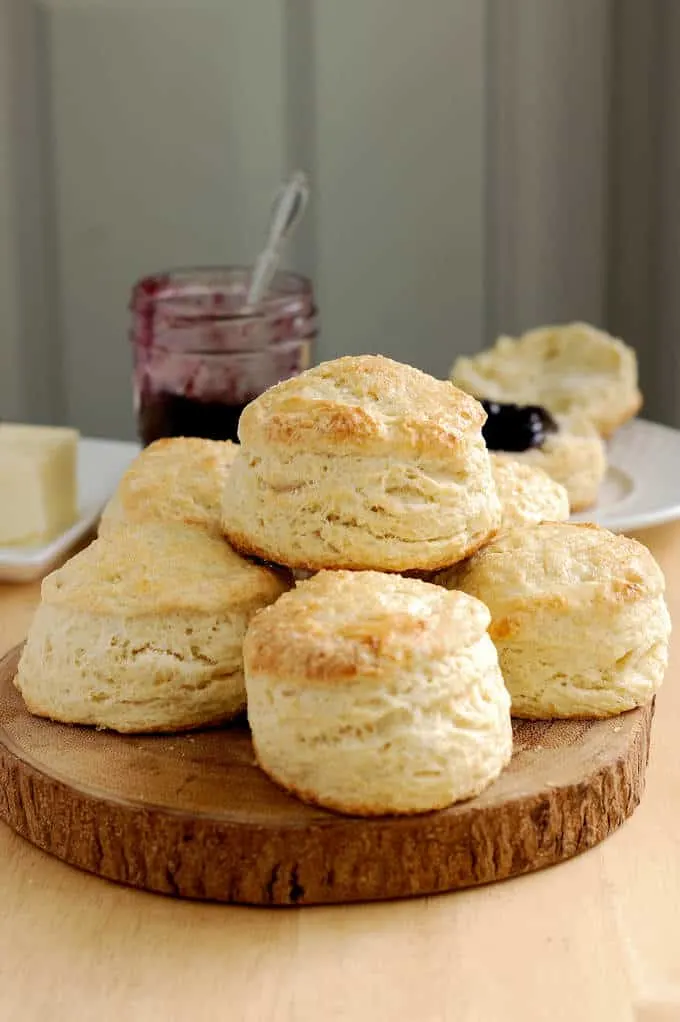
As I mentioned in my post for English Scones, my basic scone recipe is adapted from a recipe given to me by a British mum. I used that recipe for 7 years when I worked in a British tea shop.
I made adjustments to the original recipe so it could work in a US kitchen with US ingredients and measurements. I can tell you I get great feedback from everyone who tastes these scones.
Now, I’ve made these scones even better by adding a little sourdough discard to the recipe.
If you don’t already have one, I can show you how to make a sourdough starter and how to feed a sourdough starter.
Process Photos
Here’s what the recipe process looks like at each stage. Refer to the recipe card below for measurements and exact instructions.
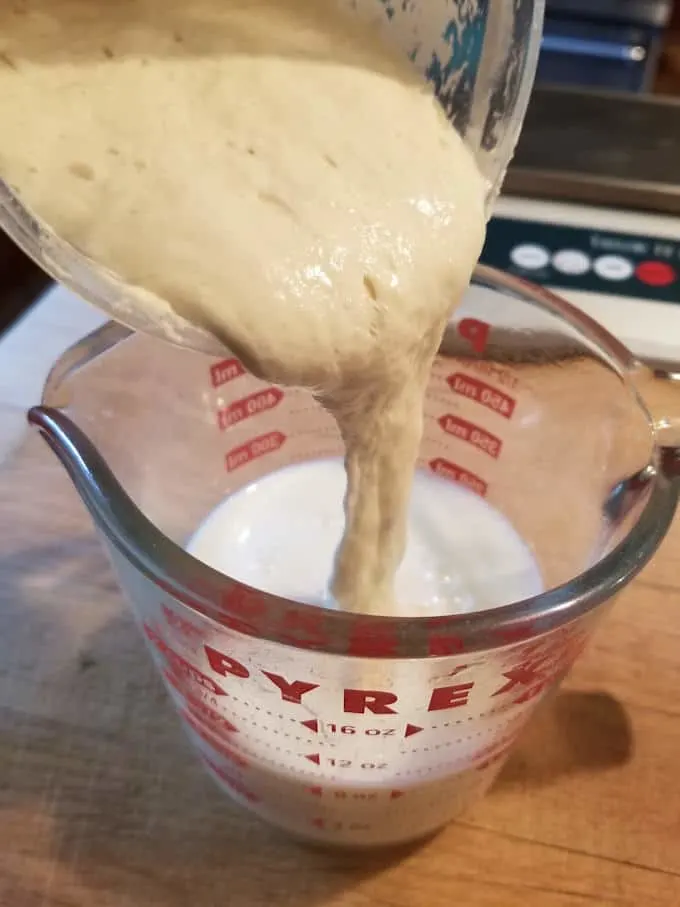
- Mix the sourdough discard into the buttermilk.
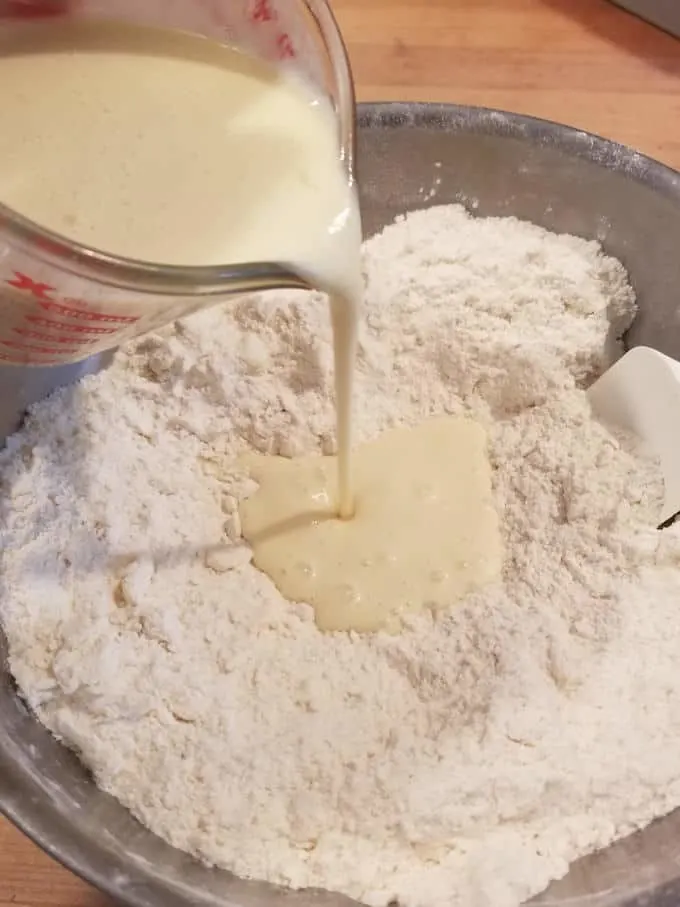
- Pour the buttermilk & discard into the dry ingredient & butter base.
- Toss until almost combined
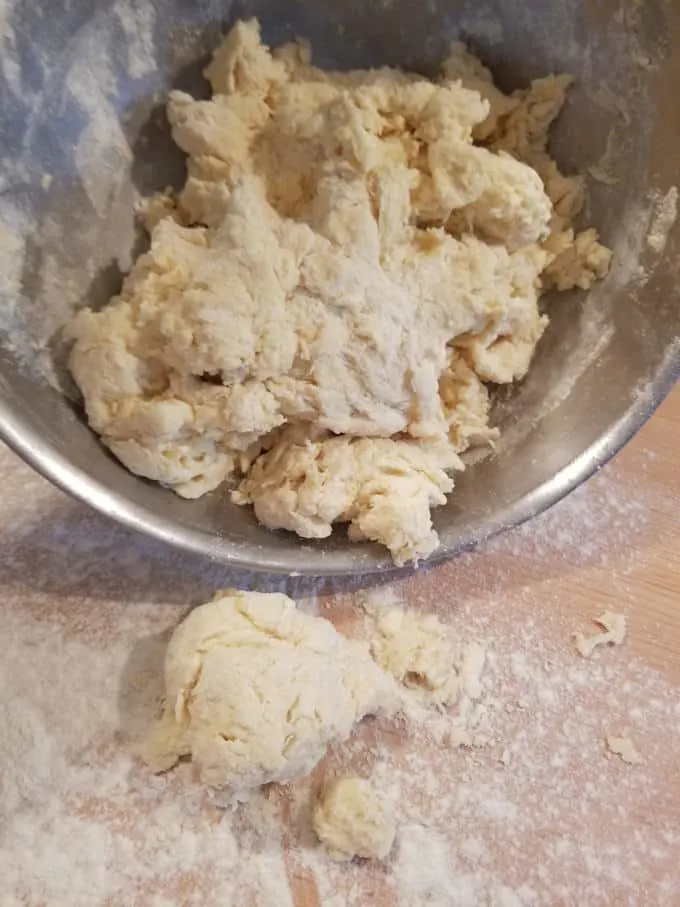
- Turn the dough out onto a floured surface.
- Knead a couple of times to bring the dough together.
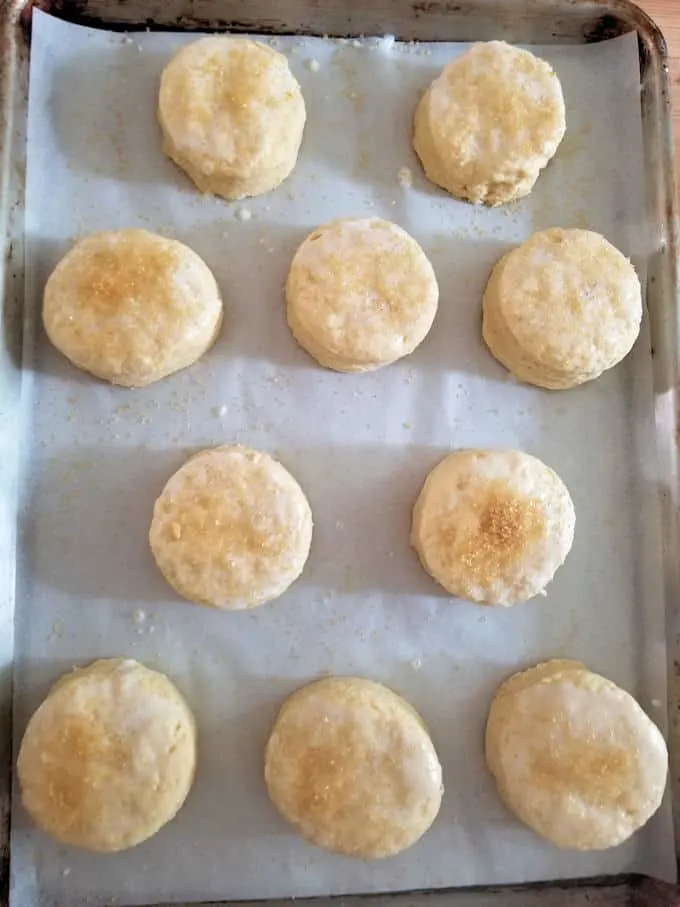
- Brush the scones with buttermilk and sprinkle with sugar before baking.
- Bake until the scones are golden brown.
Pastry Chef Tips for making Sourdough Scones
- Use real buttermilk if you can. The tangy flavor and tenderizing acidity works perfectly with the sourdough discard to make these the best scones ever. Buttermilk substitutes will work, but the real thing gives the best flavor.
- Mix the dough by hand. Mixing by hand ensures that you won’t over mix the dough and form too much gluten.
- Pat the dough by hand instead of using a rolling pin. This also ensures that the dough won’t be over worked.
- To work ahead, mix the recipe until the point where you add the buttermilk. Later you can mix the dough, roll, cut and bake.
Storage
Scones are best the day they are baked. Leftovers can be frozen for up to 3 months. Defrost and then warm in the oven to get the best texture. Do not refrigerate scones.
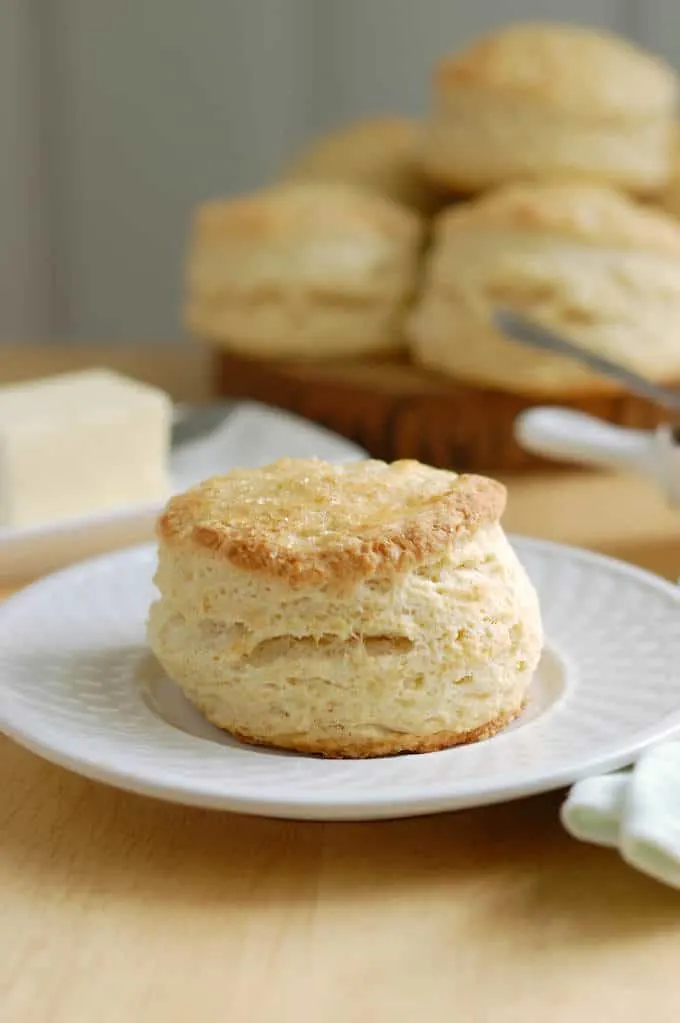
I know you hate to throw away that sourdough discard. Check out these recipes that use sourdough discard.
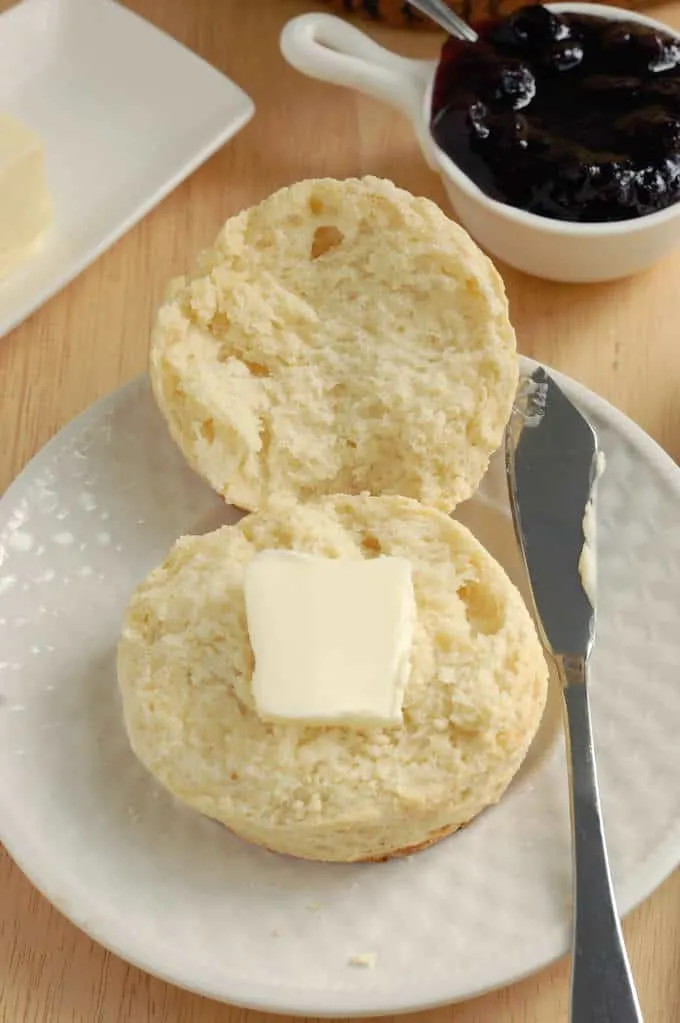
If you love this recipe as much as I do, I’d really appreciate a star rating and a quick comment. Ratings and comments help my recipes show in search results. Thanks!
Sourdough Scone Recipe
Ingredients
- 22 ½ oz unbleached all purpose flour ( 4 ½ cups, see note)
- 2 tablespoons baking powder
- 4 oz granulated sugar (½ cup)
- 1 teaspoon salt
- 6 oz unsalted butter (cold, cut into 1″ chunks)
- 8 oz buttermilk (1 cup)
- 8 oz sourdough discard (1 cup)
- 2 eggs
- Demerara Sugar for sprinkling
Instructions
- Preheat the oven to 375 °F. Line two ½ sheet pans with parchment paper or a silicone baking mat.
- In a large mixing bowl, whisk together 22 ½ oz unbleached all purpose flour, 2 tablespoons baking powder, 4 oz granulated sugar and 1 teaspoon salt. Toss in 6 oz unsalted butter chunks. Mix in the butter until the bits are the size of a pea.
- Whisk together 8 oz buttermilk, 8 oz sourdough discard and 2 eggs. Add the buttermilk mixture to the dry ingredients all at once and mix until just barely combined. Some loose flour may remain at the bottom of the bowl. DON'T OVER MIX.
- Dump the dough onto a floured surface and finish kneading by hand just until all the loose flour is absorbed. Use your hands to pat the dough until it is ¾" thick. Use a 2½"-3" biscuit cutter to cut scones. Re-roll the scraps and continue cutting until all the dough is used.
- Line the scones onto the prepared baking sheet, leaving 1" space between. Brush the tops of the scones with buttermilk and sprinkle with Demerara or granulated sugar.
- Bake on the middle racks of the oven, flipping the trays after 10 minutes (see note). The scones are ready when they are golden brown and sound hollow when the bottom is tapped. Total baking time 15-20 minutes.
Would you like to save this recipe?
As an Amazon Associate and member of other affiliate programs, I earn from qualifying purchases.

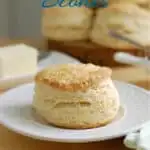

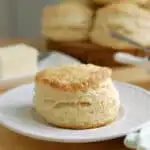





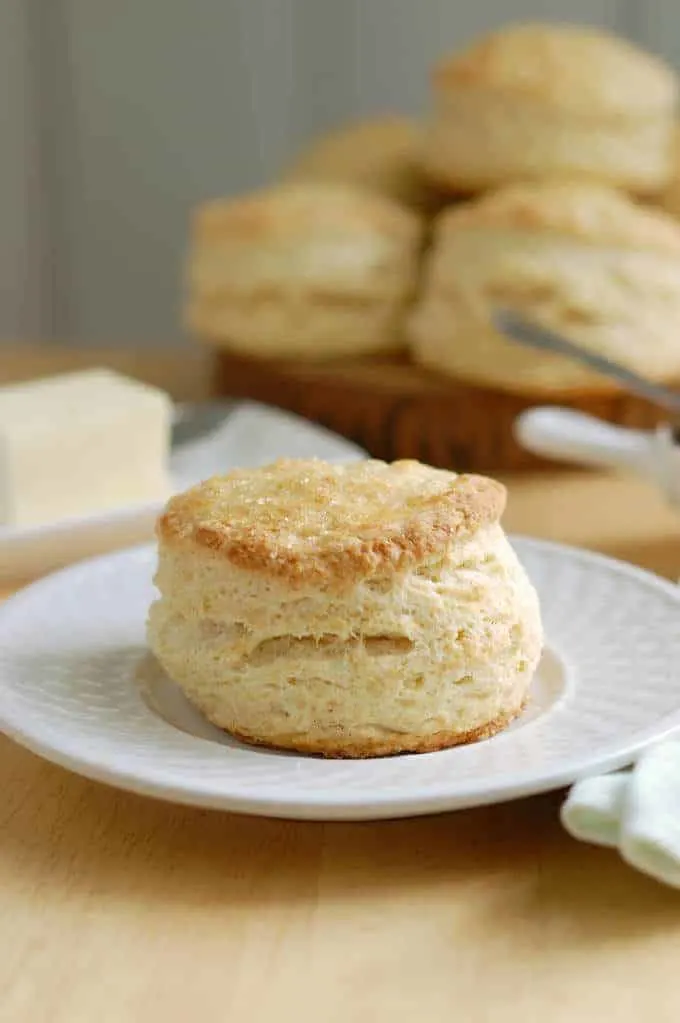
Divine, and easy to make!
Tried these for the first time tonight, and measured by weight, not volume. They came out great. Really a little more like biscuits than scones, but that’s really splitting hairs. The only difference from the recipe was bake time, more like 19 minutes. I’ll definitely make them again after the next sourdough accumulation.
Far too much liquid or too little flour. Dough as prepared according to the recipe was so liquidy it was impossible to work with. One issue might be that the cup-to-gram equivalence for flour in the recipe is off. But even having adjusted for that, they were still too liquidy and took forever to bake.
I make these scones all the time and the ratio is correct. The cup to gram equivalence is correct. If you have a scale and are weighing ingredients there is no reason to convert between cups and grams. The cup measurements are provided for many US bakers who don’t have a kitchen scale. For more information about how to measure baking ingredients visit this post.
Love this recipe! I use almond milk and only 1/2 tbsp of sugar, then do an egg wash on top and they are still great.
I have tried these and they are wonderful! I have done drop biscuits for decades because I don’t want to take the time to get everything just right and cut out. I’m more than willing to do the work for these beauties! Love the balance of not too sweet, light, flaky and tender. Yum!
I have made this recipe many times over the last few years. It always comes out perfectly. I often add chocolate chips. I have made these vegan by adding a tablespoon of vinegar to hemp milk and using coconut oil instead of butter. They are equally delicious.
Thanks for the tip about making them vegan.